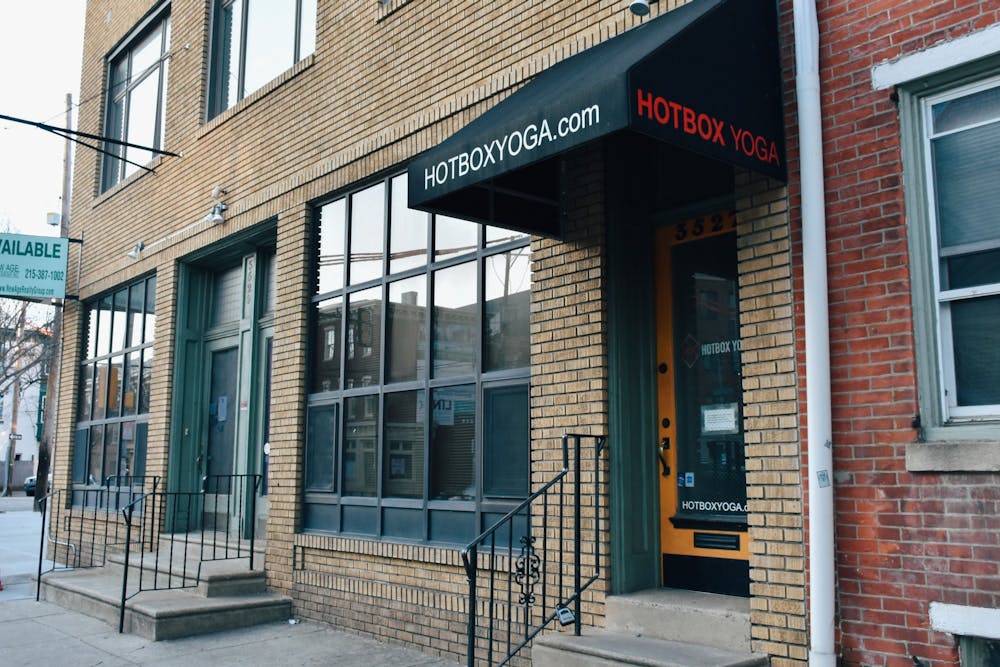I started doing yoga with my aunt when I was 12. Since then, I’ve gone when I had the chance, but definitely wasn’t a regular. Then, two years ago, I was gifted a class at Hotbox Yoga. It was my first time ever doing hot yoga, and I fell in love with the studio and the teachers.
Located on 36th and Lancaster, Hotbox Yoga is close to campus, but it feels as if it’s a world away from Penn. As you walk into the studio, you’re asked to remove your shoes and are immediately enveloped in the incense that is burned before every class as the room heats. Hotbox is a cozy but small studio, with just one room for practice. The wall–to–wall windows bring in natural light as you prepare for class.
The first–time member special costs $40 for 40 days of unlimited classes and was what drew me to Hotbox for the first time during my sophomore year. Consistent instructors like Marty kept me coming back. Marty always manages to make the people in her classes laugh even during the most challenging poses and encourages people to take their practice where they want it to go.
Caroline Curran (C ‘20), who writes for Under the Button, has been attending Hotbox for over two years. She cites the huge windows, lack of mirrors, and the general “attitude” of the studio as reasons for being a loyal Hotbox patron. The vibe at Hotbox is not competitive like other studios. Instead, Hotbox offers Curran an oasis that she leaves feeling refreshed.
After the glorious times of 40 days for $40 ended, I wasn’t going to yoga as much, because making the time and spending the money hadn’t been a priority—it became a treat every month or so. That was until ClassPass came along and offered me a free week, followed by another free month of classes. I’ve continued to use ClassPass to go to Hotbox, which got me thinking about how services such as these cause studios to evolve.
Since I first tried hotbox yoga two years ago, the classes offered expanded to include YOD —“Your Own Determination,” practice that includes a high–intensity interval training—or HIIT—portion of class.
I decided to try YOD. The instructor explained that it was originally developed to increase flexibility and work on other areas of strength for people who do CrossFit–type exercises, that might be offered through an app like ClassPass. It involves basic yoga flows, followed by an “integration” into high heart rate activity, and a twelve–minute HIIT circuit.
Emma Harris (C ‘21), a former Street writer is not a fan of the newer direction yoga studios are taking. For Harris, there are elements of Hotbox that cheapen the spiritual experience and take away from the practice. With additions of classes similar to those of more expensive, often exclusive classes that may cater to different patrons, does Hotbox lose its roots as a community studio?
Harris has found herself enjoying practicing more on her own or at Studio 34, located on 45th and Baltimore, which she says focuses less on the expensive workout clothes and more on the meditative components of yoga and building a community of reflection.
Despite this, Hotbox remains a favorite studio of mine: its instructors still make the clients feel part of a welcome community, its physical space offers peaceful and reflective setting, and it is a consistent source of a satisfying—and sweaty—workout. Curran and I agree that, as people skeptical of exercise classes, Hotbox offers an affordable option for local college yoga lovers and West Philly community members alike.

